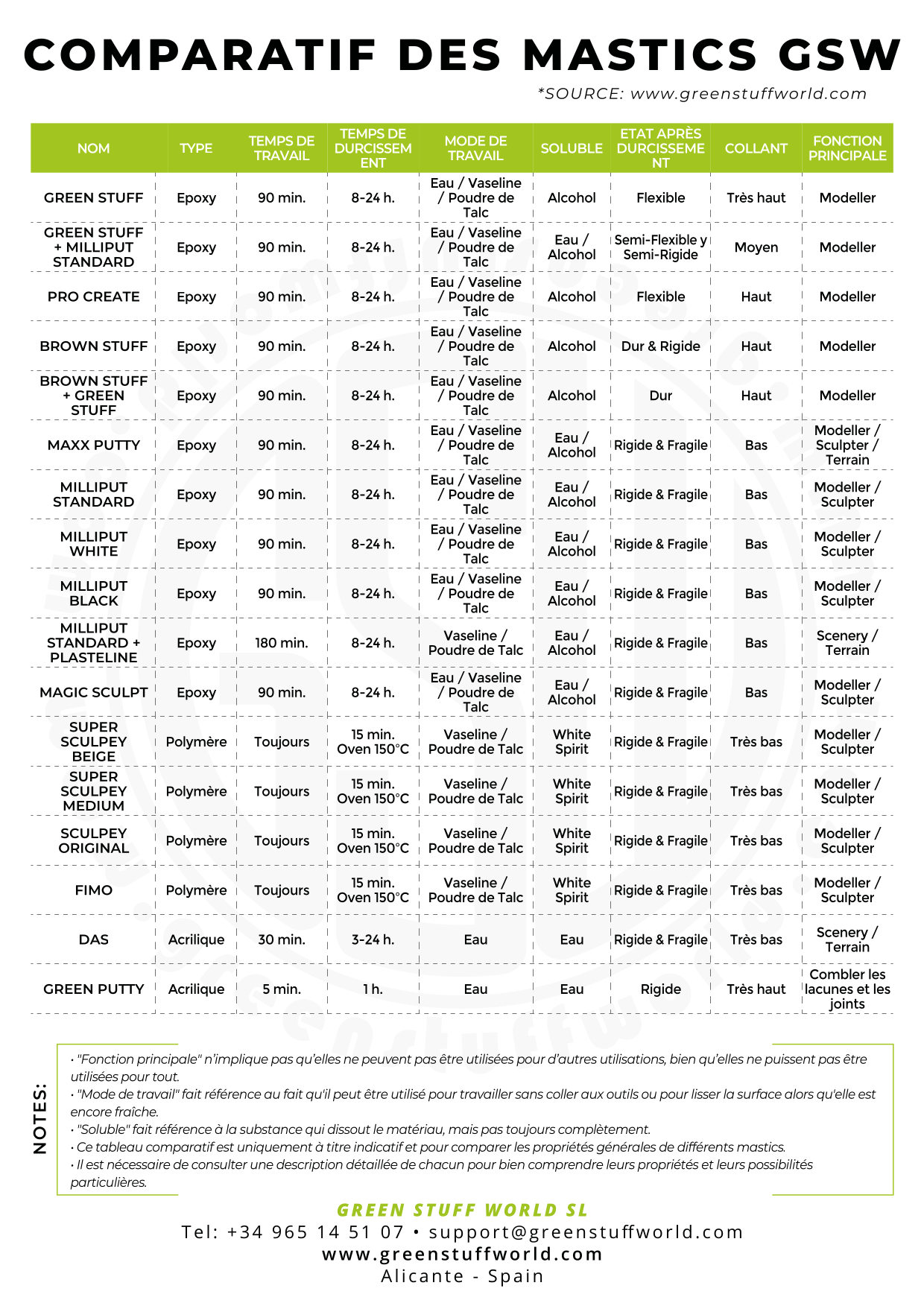
The Putties
Published on 17-12-2024Epoxy putty is a type of two-part adhesive, made from a mixture of epoxy resin and a hardening agent. It is commonly used in various applications such as repair material, modeling material, or sculpting material. It has a moldable consistency that can be molded and shaped, and dries to give a hard and durable finish. Once hardened, it can be sanded, drilled, painted, or cut, making it ideal for a wide range of crafts, arts, and modeling applications. Some of the main benefits of epoxy putty include its strong adhesive power, versatility, and resistance to moisture, heat, and chemicals.
Although this material is extremely useful, its effectiveness depends on proper storage. Store it in a cool and dry place, and make sure the two components are stored separately to avoid accidental hardening. Additionally, it is essential to use the correct ratio of resin to hardener for the desired results.
The transformative power of this versatile adhesive cannot be overstated. Whether you're sealing leaks or creating artwork, this compound offers an effective and efficient solution.
How to Use Epoxy Modeling Putty
Here is a basic guide to using epoxy putties:
Surface Preparation: Clean and dry the surface where you want to apply the two-part putty, ensuring it is free from dirt, dust, or grease.
Mix: Following the manufacturer's instructions, measure equal portions of the two components (some may work with 60/40% mixtures): resin and hardener, and mix them thoroughly. The result should be uniform in color and consistency before use.
Apply: Use your hands or a modeling tool to apply it to the surface, pressing it into the desired shape.
Wait for it to Harden: Let it fully harden, which may take anywhere from a few hours to several days depending on the manufacturer's recommendations.
Surface Finishing: Once hardened, the surface can be sanded, drilled, painted, or sculpted as desired.
Warning: Always follow the manufacturer's instructions for mixing and curing times, as well as safety precautions like wearing gloves. Additionally, it is important to use the correct amount of resin and hardener, as too much of one or the other may affect the curing process and result in a weaker bond.
Where to Use Epoxy Putty
This versatile modeling material is commonly used for scale modeling, crafts, and hobbies, for various purposes:
Repair and Fill: It can be used to repair cracks, holes, or damaged parts on models, figurines, and crafts.
Sculpting: Because it can be molded, shaped, and sculpted, it is ideal for adding detailed and custom features to models, such as terrain pieces, weapon upgrades, and more.
Weighting: Putty can be added to the base or inside of a model to increase stability and prevent it from toppling.
Bonding: It can be used to attach pieces together, providing a strong bond without the need for screws or glue.
Modeling Material for Models: It can also be used as modeling material, often mixed with pigments or other materials to achieve the desired color or texture.
Overall, epoxy putty is a popular choice for hobby, craft, and modeling projects due to its durability, ease of use, and versatility.
Epoxy Putty for Sculpting
There are several types and brands of epoxy modeling putty commonly used for sculpting and modeling miniatures:
Milliput: A two-part epoxy repair putty, known for its versatility and strength, making it a popular choice for sculpting and repairing miniatures.
Green Stuff: A two-part green putty often used by painters and sculptors of miniatures to add fine details to their models. It is known for its flexibility and ability to retain the finest details.
Magic Sculp: A two-part epoxy putty, known for its versatility, quick curing time, and smooth consistency, making it ideal for sculpting, filling, and repairing miniatures.
Tamiya Epoxy Putty: This epoxy putty comes in both normal and quick versions. It cures in 5 to 6 hours for the quick version and up to 12 hours for the normal version. Like the others, it can be used for filling, sanding, sculpting, assembling, and repairing models.
These are some of the most popular epoxy putties used in the model-making, craft, and hobby sectors. Each brand and type of putty has its own properties, so it is important to choose the one that best fits your needs and project.
Green Resin vs Milliput
Green Stuff and Milliput are two-part epoxy putties commonly used in model-making, crafts, and hobbies, especially for sculpting and repairing figurines.
Green Stuff epoxy putty is known for its flexibility, making it ideal for adding fine details and complex shapes to miniatures. It has a soft, pliable consistency that can easily be molded and shaped, and it dries to a semi-hard finish. Green Stuff also hardens faster than other epoxy putties, allowing for quick and efficient modeling.
Milliput epoxy putty, on the other hand, is known for its strength and durability. It has a slightly harder consistency than Green Stuff, making it ideal for repairing cracks, filling gaps, and adding weight to models. Milliput also hardens to a smooth finish, allowing for sanding, drilling, and painting.
Ultimately, the choice between Green Stuff and Milliput will depend on the specific needs and preferences of the user. Both are effective epoxy filler products with their own properties, so it is important to consider the specific requirements of the project before choosing one over the other. It is also useful to note that they can be mixed to achieve intermediate properties.

You can find these putties in our section TOOLS: Putties and Pastes

